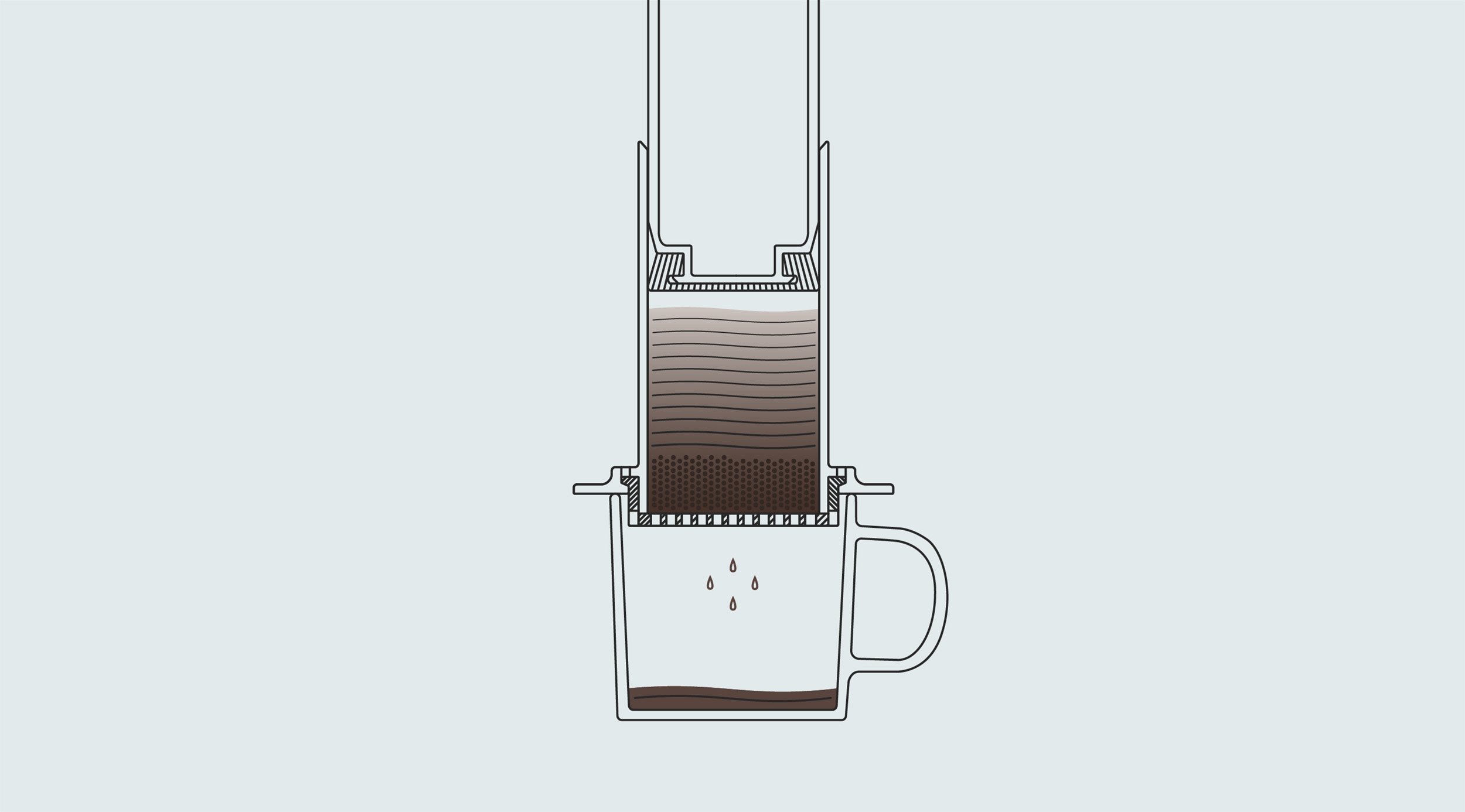The AeroPress is an efficient extractor of coffee for a number of reasons, including the very low thermal conductivity of the plastic the brewer is made from. However, we think the main contributing factor to the AeroPress’s ability to produce well-extracted coffee is the flow created during the plunging phase.
Our tests from Lesson 1.08 measured the concentrations of coffee from the top and the bottom of a coffee slurry. The concentration of the liquid closer to the coffee bed (i.e., lower down) was stronger than the liquid higher up. When it comes to the AeroPress, unless a barista agitates the slurry just before plunging, (which we don’t recommend) we can assume the liquid at the lower end of the brewer to be the most concentrated.
One benefit of the AeroPress design is its ability to push out the concentrated liquid contained in the coffee bed. In other immersion methods, a lot of the flavour trapped in the coffee bed cannot escape. But because of the way the AeroPress is configured, the strongest liquid in the brewing chamber is at the ‘front of the queue’ waiting to exit the brewer. This is similar to the way an espresso pours out from the bottom of a brew basket. Moreover, as the plunger is pressed down to the bottom of the brewer, the less-concentrated liquid higher up in the brewing chamber of the AeroPress will continue to push out any solute trapped in the coffee bed.
Some baristas, including World Champion Jeff Verellen, prefer to avoid pressing down firmly onto the plunger of the AeroPress. The argument for or against this practice is blurred, however. As you can see in this video (below) 2017 World AeroPress Champion Paulina Miczka plunges her brew until you can hear the air above the slurry squeezing through the paper filter.
The 2017 World AeroPress Champion, Paulina Miczka’s winning recipe features in this film from the Makers of the Aeropress Film, European Coffee Trip.
